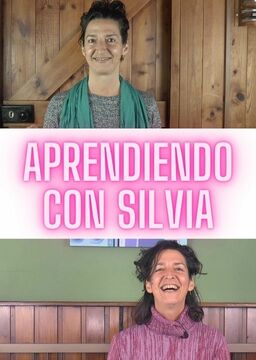









Difficulty:
 Beginner
Beginner
Mexico
Our good Mexican friends know a little about everything and they’re willing to teach us! When you get somewhere, what’s the first thing to do? Here you’ll learn how to greet friends, lovers and even grandmothers!
Difficulty:
 Beginner
Beginner
Mexico
Our good friends from México City are willing to talk about everything: good, bad or ugly. Here we have their take on kidnapping, one of the growing fears of Mexicans.
Difficulty:
 Beginner
Beginner
Mexico
Alejandro Fernandez is not just a Mexican singer any longer: he has become a star of Latin-American proportions. Not only has he succeeded everywhere but he also has adopted different sounds from different countries. Viento a Favor was recorded both in Buenos Aires and in Los Angeles, a perfect axis through the whole continent.
Difficulty:
 Beginner
Beginner
Nicaragua
While stirring a pot, Doña Coco sings us a couple of Christian songs, which she learned at her evangelical church.
Difficulty:
 Beginner
Beginner
Mexico
Mexico has a rich and varied architectural heritage that can be seen in its many classic colonial era plazas and buildings. The elementos of this historic architecture are preserved and utilized by today’s planners and builders, providing D.F. (Mexico City) with developments that are modern yet traditional and inviting, maintaining a sense of continuity with the past as the country pushes ahead into the 21st century.
Difficulty:
 Beginner
Beginner
Venezuela
Carlos is a fine artist and an athlete who, when not painting a canvas, can be found sailing windsurfers and kites from his little guest house on the breezy south beach in Adícora, Venezuela. We asked him if he would give us a little presentation from atop his roof. You can hear for yourself that this spot is all about one thing, el viento!
Difficulty:
 Beginner
Beginner
Mexico
Couldn’t you just go for some refried beans right now? They are great for breakfast, great for lunch, and we’re happy to have them for dinner, not to mention a medianoche snack! Let’s drop in on Gloria as she cooks up a batch for us.
Difficulty:
 Beginner
Beginner
Guatemala
Wicoy: como una calabaza pequeña, tal vez 15 cm de diametro, verde y blanco y es mucho mas fino que la calabaza. Para comer es parecido a un zucchetthi/zucchini. Bastante rico. (Thank you to Guatesol for info!) Rafael relates facts and myths of the natural environment in his native land.
Difficulty:
 Beginner
Beginner
Mexico
Al gusto means, literally, “to the taste,” but in English we usually express this as “to taste.” So Gregoria doesn’t add honey to the avena (oatmeal). She puts it on the side of the plate. The person eating can can put it on al gusto, a little or a lot, however they like it. We often do this with salt, syrup, hot sauce… anything where individual palates vary considerably.
Difficulty:
 Beginner
Beginner
Mexico
In beautiful Puerto Escondido, Oaxaca, the local cooks know their fruit! Let’s drop by the lovely Casa Mar as Gloria prepares a glorious multi-colored fruit salad made with local sandía (watermelon), melón, and plátano (banana). You may soon find yourself blending melon seeds into a delicious horchata.
Difficulty:
 Beginner
Beginner
Mexico
Miguel, Alvaro and David have teamed up once again to tell us a little something about the weather and overall climate found in Mexico City and its environs. Pay attention to the words and vocabulary, as they will certainly be of use no matter where you travel!
Difficulty:
 Beginner
Beginner
Mexico
Are you ever confused about what to say to other pedestrians? Our Mexico City friends Miguel, Anvar and David have agreed to pass on a few tips regarding what to say, and when, as we navigate the streets and sidewalks of the habla hispana (the Spanish speaking world).
Difficulty:
 Beginner
Beginner
Mexico
To hear La Gusana Ciega play live we trekked to a club called Babel located in a giant mall / theme park called Mundo E, located just north of Mexico City. Come backstage with us for an exclusive interview you’ll find only here!
Difficulty:
 Beginner
Beginner
Spain
Juan paints outlines on his tiles using a paintbrush and manganese oxide, but at one time practitioners did this by laying down fine strings dipped in wax, and this explains why Juan still calls the technique he uses cuerda seca, or “dry cord.” Note that he describes the technique as one of alto relieve, or “high relief,” which is the opposite of bas-relief (low relief).
Are you sure you want to delete this comment? You will not be able to recover it.